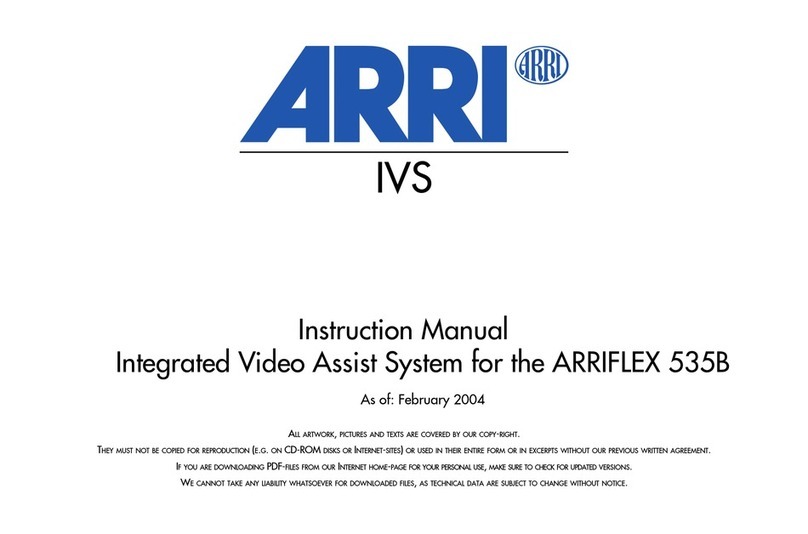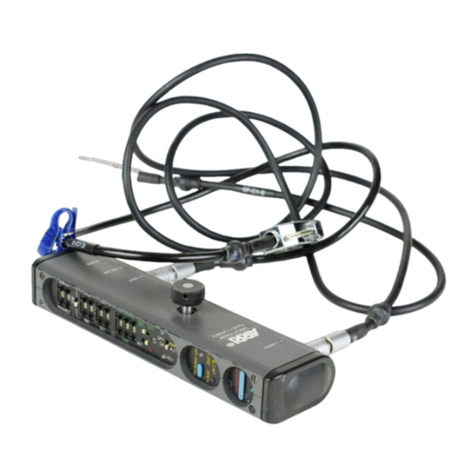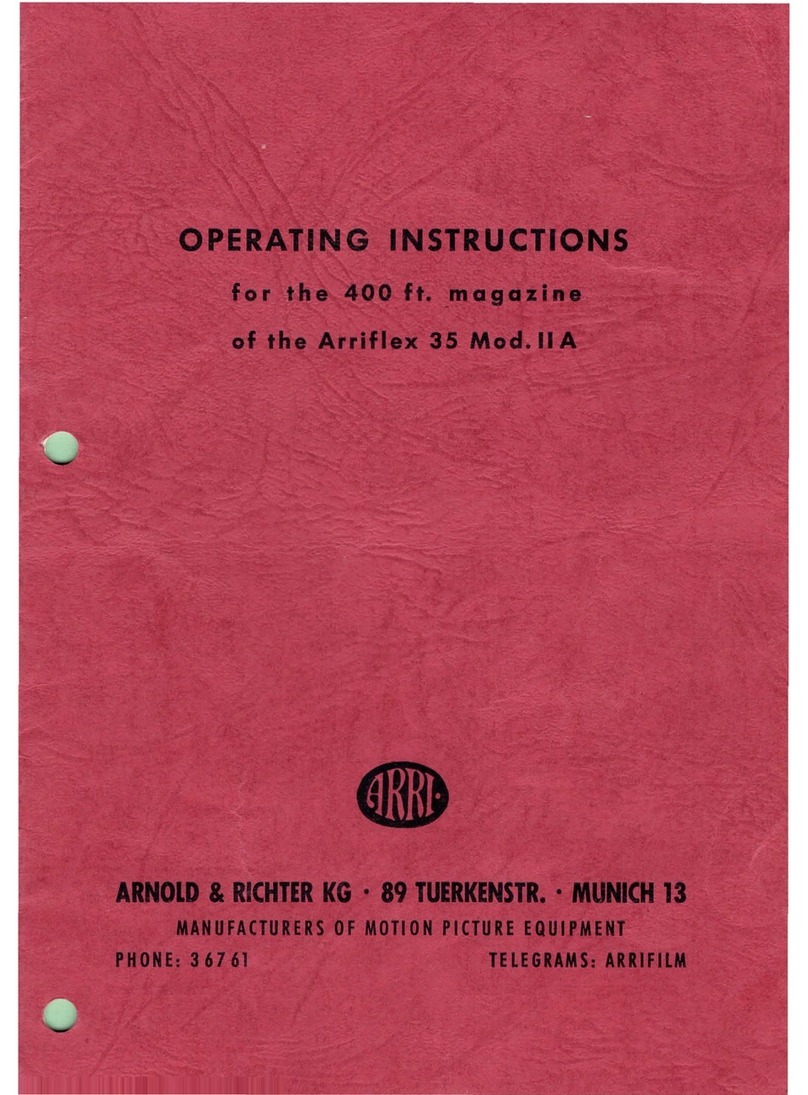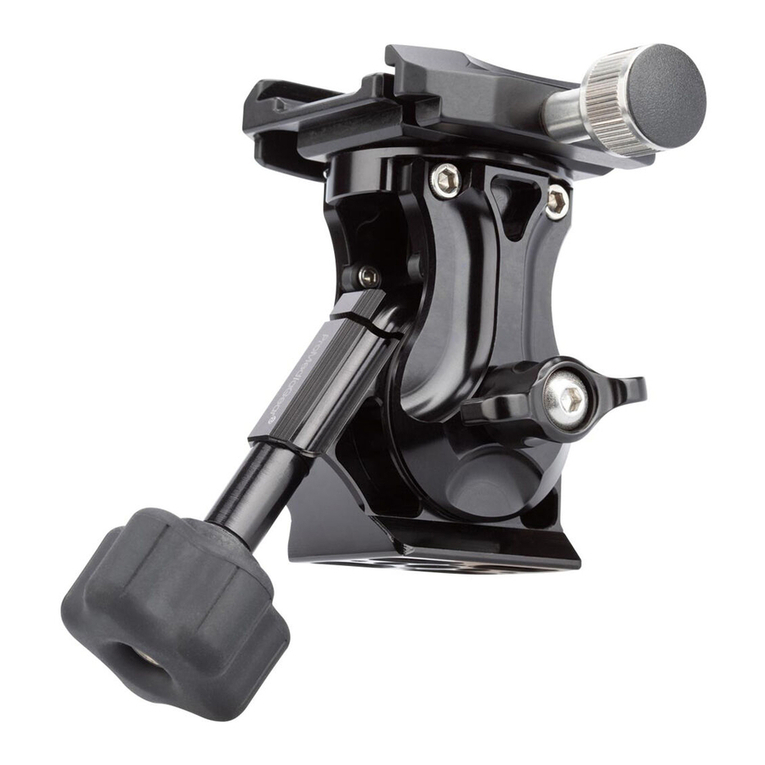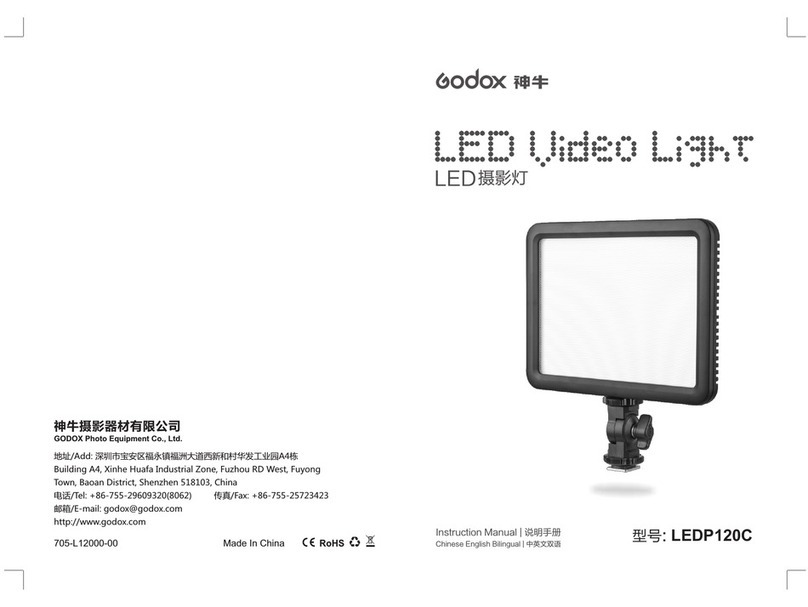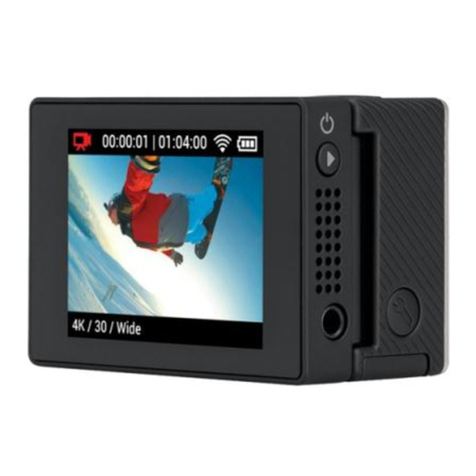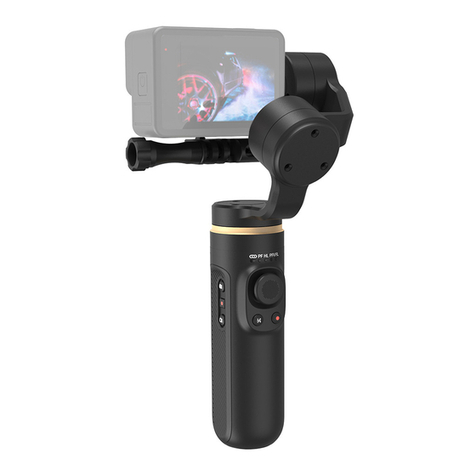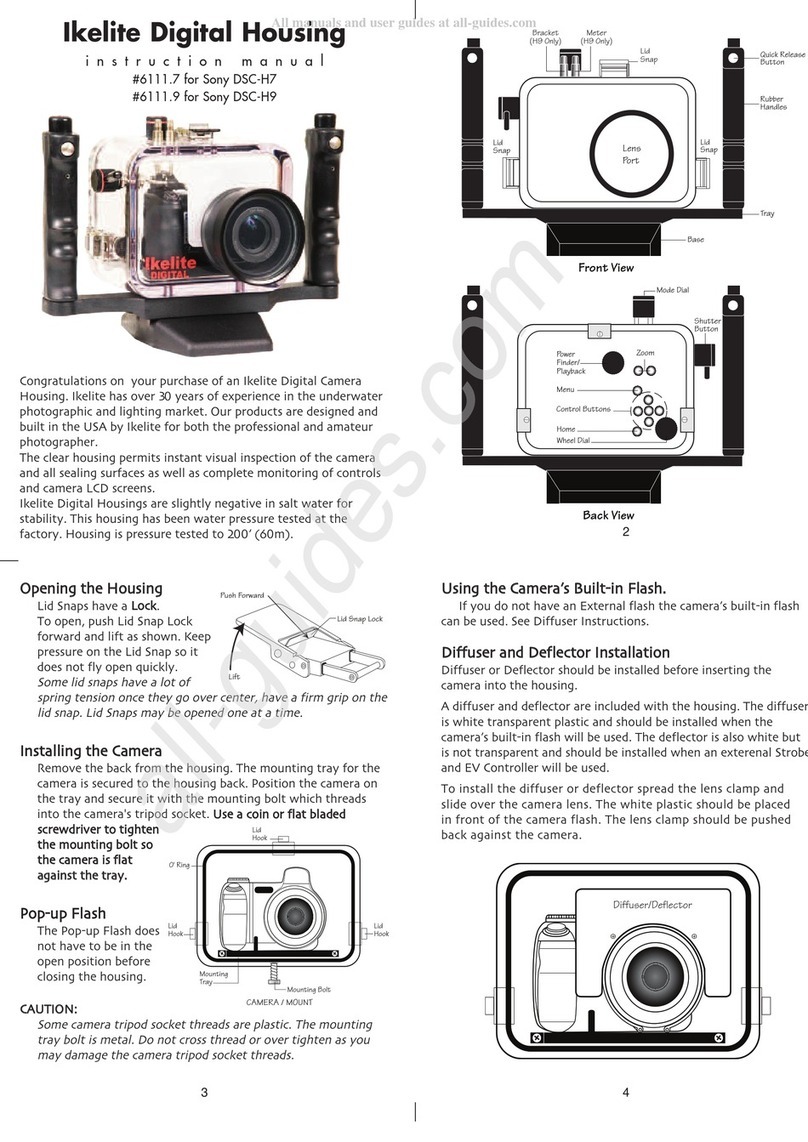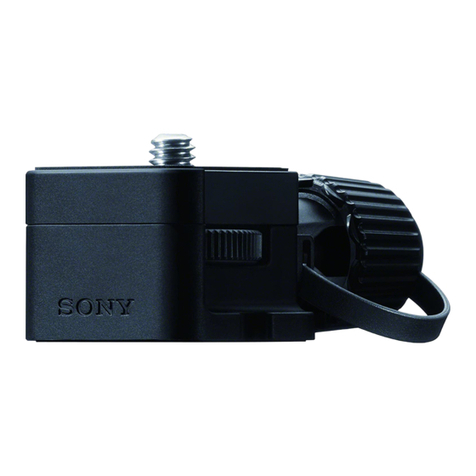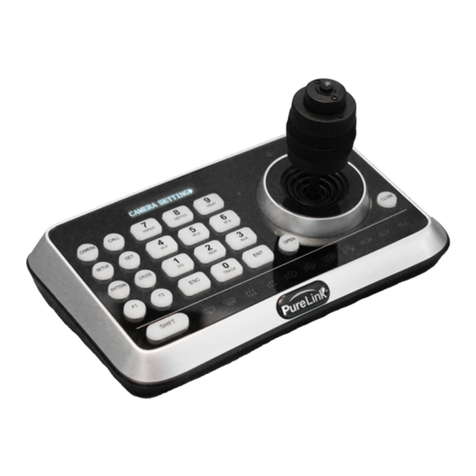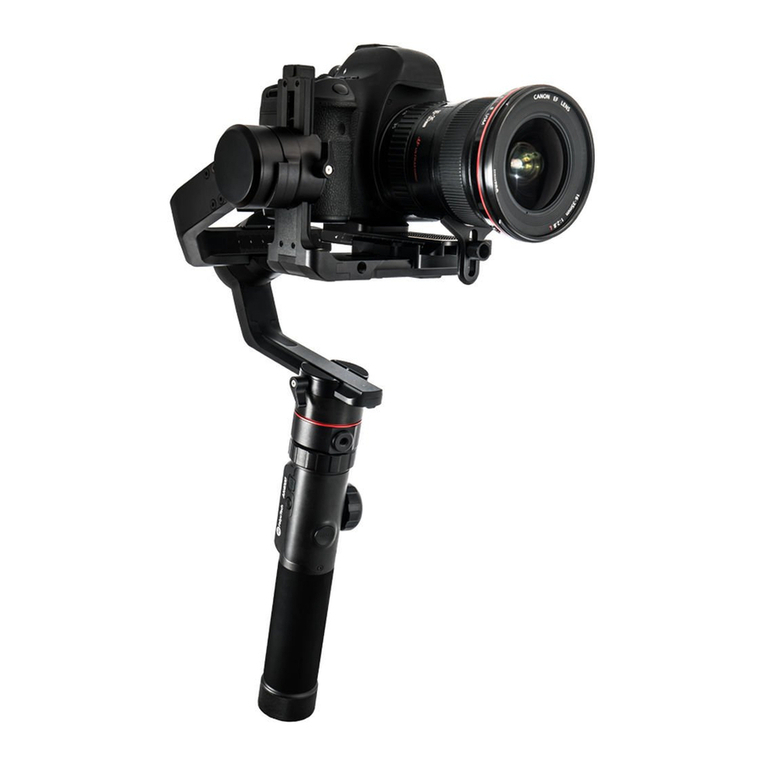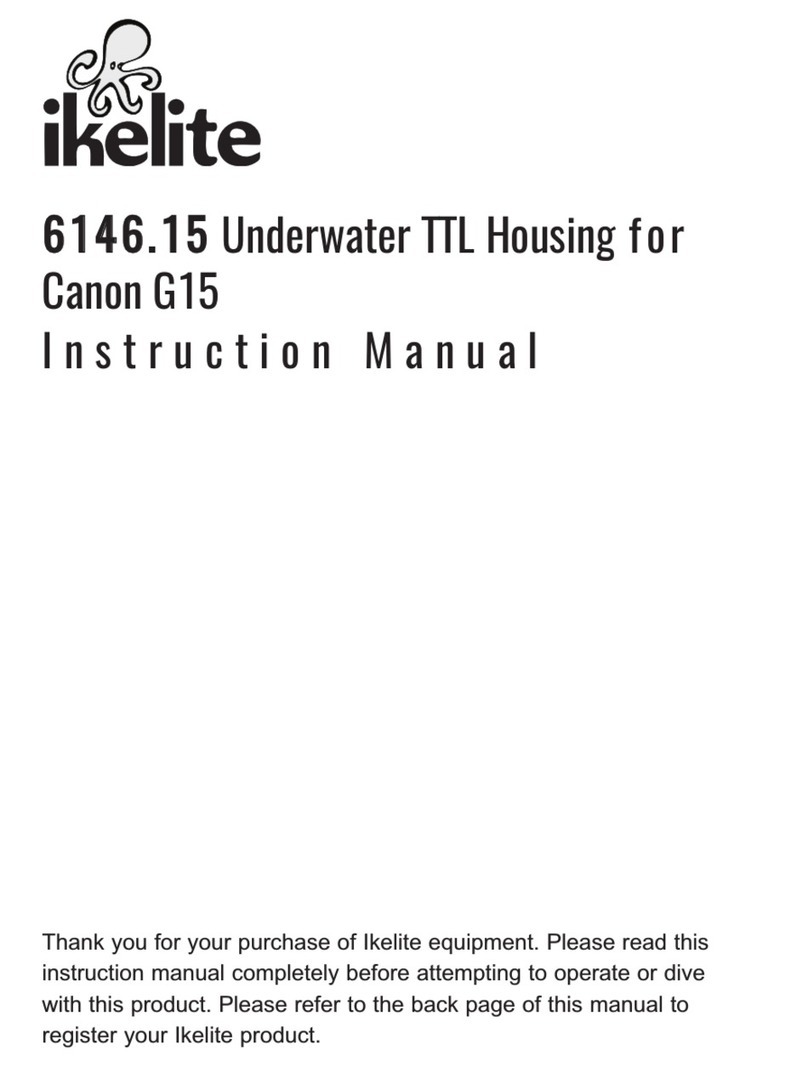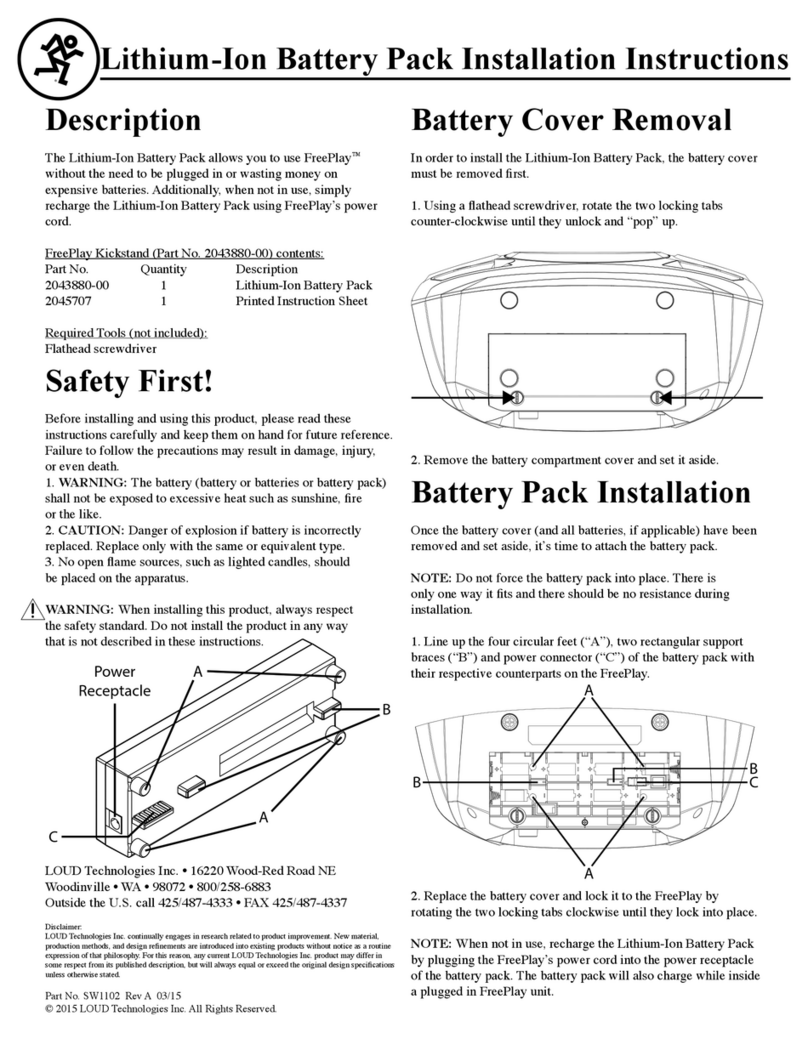ARRI IVS 435 User manual

IVS 435 / II
Integrated Video-Assist System II for the ARRIFLEX 435
Instruction Manual
As of: August 2003
ALL ARTWORK, PICTURES AND TEXTS ARE COVERED BY OUR COPY-RIGHT.
THEY MUST NOT BE COPIED FOR REPRODUCTION (E.G. ON CD-ROM DISKS OR INTERNET-SITES) OR USED IN THEIR ENTIRE FORM OR IN EXCERPTS WITHOUT OUR PREVIOUS WRITTEN AGREEMENT.
IFYOU ARE DOWNLOADING PDF-FILES FROM OUR INTERNET HOME-PAGE FOR YOUR PERSONAL USE, MAKE SURE TO CHECK FOR UPDATED VERSIONS.
WECANNOT TAKE ANY LIABILITY WHATSOEVER FOR DOWNLOADED FILES, AS TECHNICAL DATA ARE SUBJECT TO CHANGE WITHOUT NOTICE.

•”Video with data” composite out or Y
•Mini monitor connector
•Switch ON/OFF/Keyboard locked
•Manual gain control (ON)
•White balance (Indoor/Outdoor/Automatic/Manual)
•Flicker free (ON/OFF)
•Mode (Frame store / Compare)
•Store key
•Activate inserter onscreen menu or • store position of inserted windows
•Increase gain or • cursor up or • move inserted window up or • increase blue
•Go to sub menu or • move position of inserted windows right or • increase inserter values or
• increase red or • change format marking number
•Go to sub menu or • move position of inserted windows left or • reduce inserter values or
• reduce red or • change format marking number
•Decrease gain or • cursor down or • move inserted window down or • decrease blue
•”Normal video” composite out or C
•Genlock In

3
1. Contents
Contents
1. Contents ............................................................3
2. Safety Specifications ......................................5
3. General Description of the IVS .....................7
3.1 Main Features............................................7
3.2 System Components ...................................9
4. Setup ...............................................................13
4.1 Inserting the Optic....................................13
4.2 Mounting the IVS .....................................15
4.3 Changing the Optic..................................19
4.4 Connections.............................................21
5. Standard Video Controls ........................... 27
5.1 On/Off and Locking the Keyboard ............27
5.2 Mechanical Iris ........................................28
5.3 Aligning the Image and Focusing ..............29
5.4 White Balance (WB).................................30
5.5 Gain Control ...........................................35
5.6 Flicker Free on/off ...................................38
5.7 Frame Store and Compare........................40
5.8 Changing Format marking number ............43
6. Inserter Facilities ...........................................45
6.1 Setting the On Screen Displays..................46
6.2 Main Menu..............................................47
6.3 Load/Store Menu.....................................48
6.4 Video Adjust Menu ..................................53
6.5 Format Marking Menu..............................68
6.6 Status Menu.............................................73
6.7 TIME CODE Menu ....................................81
6.8 USER BITS Menu ......................................87
6.9 Text Menu................................................91
6.10 Pull-Down Menu ....................................95
6.11 Display Menu ......................................101
6.12 VITC Line Menu....................................105
6.13 White Line Menu..................................109
7. Technical Data ..............................................114
8. Order numbers ............................................114
9. Index .............................................................115
ARRI Service ......................................................121

4
Contents

5
2. Safety Specifications
Warnings
Note: Operational error possible!
Danger of injury or
equipment damage possible!
General Safety Specifications
Attention! Danger of injury! Never place your
hand in the lens mount receptacle or the inside
of the camera or magazine while it is running.
•In order to ensure optimal performance, it is essential
that you acquaint yourself with this instruction manual,
and the manual of the ARRIFLEX 435.
•Use the IVS only with ARRIFLEX 435 cameras, and
only as described in this manual.
•Assembly and initial operation should be carried out
only by persons who are familiar with the equipment!
•Remove all cables before transport or servicing!
•Repairs should be carried out only by authorized
service centers!
•Use only original ARRI replacement parts and acces-
sories!
•Check all operations on the corresponding monitor.
Safety Specifications

6
Important Notes
• In wet weather the normal safety precautions for
handling electrical equipment should be taken.
•Avoid operational errors!
•Do not touch optical surfaces!
• Clean optical surfaces only with a lens brush or a
clean lens cloth! In cases of solid dirt moisten a lens
cloth with pure alcohol.
•Do not use solvents in cleaning!
•Do not use force!
•Do not remove any screws which are secured with paint!
Product Specifications
In the case of inquiries or when ordering parts, please
advise serial number and model.
Explanation of the Symbols
in the Instruction Manual
§indicates objects which are shown in the
photographs or drawings.
Safety Specifications

7
3. General Description of the IVS
The Integrated Video-Assist System (IVS) for the ARRIFLEX
435 responds to a strong request from camera users and
integrates a complete video assist system totally into the
camera body. It offers unsurpassed image quality com-
bined with a state-of-the-art inserter to add frame lines,
time code and text to the video image. Colors can be set
to fixed values or controlled manually or automatically.
3.1 Main Features
•Integrated into the camera body
Instead of a bulky add on, the video assist becomes an
integrated part of the camera without additional cabling.
•High sensitivity
A high speed lens with an aperture of 1 : 1.4 and one
of the most sensitive CCD-Chip available on the market
provide an excellent color video image in editing quality
even when the light was set for a high speed film stock,
which will be pushed during processing.
•High resolution
The design of the new IVS optics was based on the
435´s view finder data and resulted in an image quality
which can not be realized by add on solutions.
• Flicker-free
An integrated digital frame store enables the video
camera to be synchronized to the film camera´s mirror
shutter and provides a flicker-free video image from 1 fps
to maximum speed (in manual gain control mode)
because the video image is always taken at the ideal
position of the mirror shutter.
Flicker free can be switched off to bypass the digital frame
store and have the video assist output with no delay.
•Full manual white balance
In addition to the standard indoor white balance setting
with 3200 K, an outdoor setting with 5600 K and
automatic adjustment, color can be fine tuned with a
separate red and a separate blue channel for manual
white balance.
General Description

8
•Even further resolution in camera run mode
Video images are now also in the camera run mode in
almost full video resolution due to a new technology.
•New video exposure time mode ‘identical with film exposure’
The exposure time of the video assist can be programmed
to follow the exposure time of the film. Thus, identical
motion blur on film and video assist is achieved.
•Store and recall for all settings
All settings can be stored and recalled. By this, it is possible
for example to trim all the settings for indoor shooting,
store them, have some exterior scenes, go back indoor
and call the old settings back.
Up to 6 sets of settings can be stored.
•Integrated frame line inserter
Frame lines can be electronically added to the video image.
This ensures that the lines are visible even in difficult
conditions. The area outside of the frame lines can be
darkened electronically to emphasize the important
image area.
•Integrated time code inserter
It is possible to insert Time code into the video image.
Thus, the video assist creates a reliable link to video
editing. The information on ”3:2” pull-down, which
can be inserted as well, ensures the same reliability in
an NTSC environment.
•Integrated text inserter
Additional text like take numbers or production name
can be added to the video image by sending characters
on a serial interface.
•Two additional Y/C Outputs
In addition to the usual composite outputs, the IVS offers
a Y/C output (S-VHS) for an even better video image
without annoying color artifacts with or without data
inserted into the video image. The output is on a standard
S-VHS connector as well as on two BNC sockets.
•On-Screen programming
All functions, which do not effect the image appearance
directly like gain control, can be conveniently programmed
with an onscreen programming menu on the video monitor.
• Full remote controllable
All settings can be controlled directly on the IVS as
well as via RS 232 with the remote control software
(under development)
•Image compare function
It is possible to store a particular image and compare
General Description

9
it against other images. This clearly shows the difference
between the images e.g. during stop effect shots.
•Automatic and manual gain control
The gain is controlled automatically to its best value
but can also be set manually.
•External synchronization input (Genlock)
The IVS has an external synchronization input to enable
multi camera use.
•Mini monitor connector
The IVS offers a connector for a 12 V LCD mini
monitor combined with a 1.1 A power supply.
Note: All ARRIFLEX 435 versions (435, 435 ES and
Advanced) can be equipped with the IVS
independently of the expanded function module.
However, the time code functions such as insertion
of time code, user bits, pull-down information,
VITC and white line flags can only be activated
if the expanded function module is installed.
As the IVS is designed for an 80 : 20 beam splitter, there
is no need for the 50 : 50 beam splitter, which is used for
other color video assists.
3.2 System Components
•Optic Silent and/or ................................. K2.47230.0
•Optic Academy ...................................... K2.47231.0
•Video Electronic complete ............. K2.47365.0 for PAL
or K2.47366.0 for NTSC
The Video Electronic complete consists of two parts:
•CCD Optic Module
•Inserter / Antiflicker Module
• Software for text input ............................... On request
General Description

10
3.2.1 Optic Silent
For a complete and working IVS, either the optic silent or
the optic acacemy has to be installed inside the CCD optic
module. They can be easily exchanged.
The optic silent forms an image on the CCD chip which is
based on the 35 mm silent format with a picture width of
24 mm. An additional area will surround the actual image.
This is to check for important objects outside the image area.
The lenses are especially designed and built for the use with
the ARRIFLEX 435 to achieve the best possible image quality.
Especially the aperture of 1 : 1.4 is important for the use
as video assist lenses because only a small portion of the
light that goes through the camera lens reaches the video
chip. Therefore the lenses are not designed as zoom lenses
because it would be impossible to get the same image
quality and speed.
All silent optics are marked with an S in the serial number,
e.g. S0040.
There are no different lenses for PAL and NTSC.
3.2.2 Optic Academy
For a complete and working IVS, either the optic silent or
the optic acacemy has to be installed inside the CCD optic
module. They can be easily exchanged.
The optic academy forms an image on the CCD chip which
is based on the 35 mm academy format with a picture width
of 22 mm. An additional area will surround the actual image.
This is to check for important objects outside the image area.
The lenses are especially designed and built for the use with
the ARRIFLEX 435 to achieve the best possible image quality.
Especially the aperture of 1 : 1.4 is important for the use
as video assist lenses because only a small portion of the
light that goes through the camera lens reaches the video
chip. Therefore the lenses are not designed as zoom
lenses because it would be impossible to get the same
image quality and speed.
All academy optics are marked with an N in the serial number,
e.g. N0040.
There are no different lenses for PAL and NTSC.
General Description

11
3.2.3 CCD Optic Module
The CCD optic module, which is mounted on the ARRIFLEX 435
view finder system has to be equipped with a video lens.
This module contains the CCD-chip and all the necessary
elements to center the video image on the TV-Monitor screen
and to adjust the focus. It houses also a video pre-amplifier
to increase the sensitivity of the IVS at low light conditions.
The CCD optic module is available in PAL and NTSC.
It is necessary to keep the combination of CCD optic module
and Inserter/Antiflicker module together as delivered.
Mixing the modules might lead to a reduced image quality.
On request ARRI can supply a second CCD optic module
optimized for a particular Inserter/Antiflicker Module.
3.2.4 Inserter / Antiflicker Module
The Inserter/Antiflicker module contains most of the IVS
electronics. This 22 mm wide module, which is mounted on
the right side of the ARRIFLEX 435, holds the video camera
electronic, an anti flicker processor and the entire inserter.
All control elements, which are often used, as well as all
in- and outputs are located here.
The Inserter/Antiflicker module is available in PAL and NTSC.
It is necessary to keep the combination of CCD optic module
and Inserter/Antiflicker module together as delivered.
Mixing the modules might lead to a reduced image quality.
On request ARRI can supply a second CCD optic module
optimized for a particular Inserter/Antiflicker module.
General Description

12

S 1 S 2 S 3
S 4
13
4. Setup
4.1 Inserting the Optic
For a complete and working IVS, either the optic silent or
the optic academy has to be installed inside the CCD
optic module.
A 1.5 mm allen key is used.
Do not touch optic surfaces.
All lenses must be clean.
Do not use force.
a) Remove the cap, which is located at the end of the
module §by twisting it counter clockwise to
get access to the alignement screws.
b) Make sure that the focus screw (S3) §is in the
middle of its range.
cap •
Setup

14
•key
c) Insert the optic with the bayonet first into the CCD
optic module. Make sure that the key is aligned with
the key way §.
d) Press the optic carefully into the mount and rotate clock
wise to the stop. Make sure that the key is on the right
side of the lens securing spring.
e) To release the optic rotate carefully counter clock wise
until loose and remove forward.
f) Reattach the cap at the end of the CCD optic module.
Setup

15
4.2 Mounting the IVS
The following tools are needed to mount the IVS:
3 mm allen key
0.5 x 3.5 mm screw driver (first time installation only)
2.5 mm allen key
1.5 mm allen key
As there is a vertical connector between the CCD optic
module and the Inserter/Antiflicker Module, it is necessary
to take the view finder system off the ARRIFLEX 435
before the IVS is installed.
The CCD optic module is mounted on the right side of the
ARRIFLEX 435 view finder system:
Disconnect camera of all power supplies.
For the initial installation of the IVS on the ARRIFLEX 435 it
may be necessary to exchange the flange, which is mounted
on the view finder system of the ARRIFLEX 435. The IVS is
delivered with a modified flange that can hold the IVS as
well as other video-assists. This new flange remains on
the ARRIFLEX 435. Therefore it is not necessary to remove
it when the IVS is taken off.
Support the viewfinder system.
Do not touch optic surfaces.
a) Remove the view finder system by loosening the three
mounting screws §.
•3screws
Setup

16
b) Remove the protection cap of the video tap ➪ photo.
Note: Step c) is only necessary for the initial installation
of the IVS. If the flange is already modified with
three additional threads, proceed with step d).
c) Remove the old flange by taking out the four screws
§and mount the new flange.
Make sure that the pin is aligned with the bore hole.
Put the four screws back and close them.
d) Insert the CCD optic module and mount it with three
screws §at the new flange.
protection cap •
4 screws •
•3threads • pin
flange, old version flange, new version
3 screws •
Setup

17
e) Take the expanded function module or the cover off
the camera. To do so open the mounting screw §
with a 3 mm allen key and swing the cover or the
module off.
f) Attach the Inserter/Antiflicker module to the camera
by placing the registration-pins in the appropriate
receptables and swing module on.
Do not use force
g) Close the mounting screw with the same 3 mm allen
key that is used for the extended function module or
the cover. Turn the mounting screw back until the
square screw head is aligned parallel to the profile of
the Inserter/Antiflicker module as illustrated §.
h) Align the registration pins of the expanded function
module or the cover with the receptables of the IVS,
swing on, and close the mounting screw.
Note: An expanded function module or cover must be
in place before operating the camera.
With the cover attached only, there is no TC-
recording or related functions.
square screw head
parallel to
outer profile •
•receptables
screw •
Setup

18
i) Place the view finder system back on the camera body
and close the three mounting screws.
Ensure clean contacts.
Do not use force.
Note: Because of the high speed video optic (Academy
or Silent), it is no longer necessary to use a 50 : 50
beam splitter, as it was with other color video
assists. The IVS is designed to work with a 80 : 20
beam splitter.
Setup

19
4.3 Changing the Optic
For exchanging the optic between academy and silent
format, it is necessary to take the view finder system off
the camera in order to remove the CCD optic module.
The following tools are necessary:
3 mm allen key
2.5 mm allen key
1.5 mm allen key.
Disconnect camera of all power supplies.
Support the viewfinder system.
Do not touch optic surfaces.
All lenses must be clean.
Do not use force.
a) Take the view finder system off the camera by loosening
the three mounting screws §.
b) Remove the CCD optic module by opening the three
screws §.
c) Remove the cap, which is located at the end of the
module §by twisting it counter clockwise to
get acess to the alignement screws.
•3screws
3 screws •
cap •
Setup

S 1 S 2 S 3
S 4
20
d) Make sure that the focus screw (S3) §is in the
middle of its range.
e) To release the optic rotate carefully counter clock wise
until the key is on the other side of the spring and the
optic gets loose. Remove forward.
f) Insert the new lens with the bayonet first into the CCD
optic module. Make sure that the key is aligned with
the key way §. Press the lens slightly into the
module and rotate clockwise to the stop. Make sure
that the key is on the right side of the lens securing spring.
g) Reattach the cap at the end of the CCD optic module
h) Mount the CCD optic module back to the view finder
system with the three screws.
i) Put the view finder system back onto the camera and
tighten the three mounting screws.
•key
Setup
This manual suits for next models
1
Table of contents
Other ARRI Camera Accessories manuals

ARRI
ARRI Hi-5 User manual

ARRI
ARRI ALEXA Mini LF SUP 7.1.2 How to use
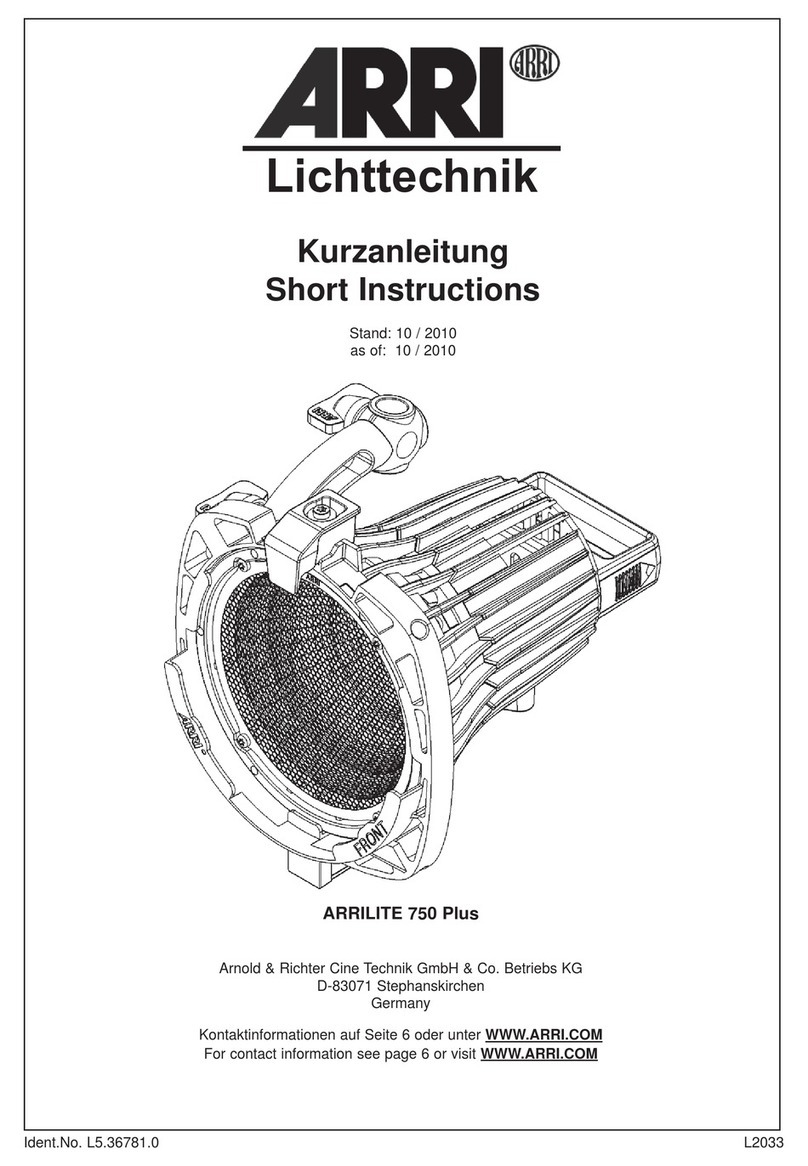
ARRI
ARRI ARRILITE 750 Plus Manual

ARRI
ARRI ALEXA User manual

ARRI
ARRI ARRIHEAD II User manual
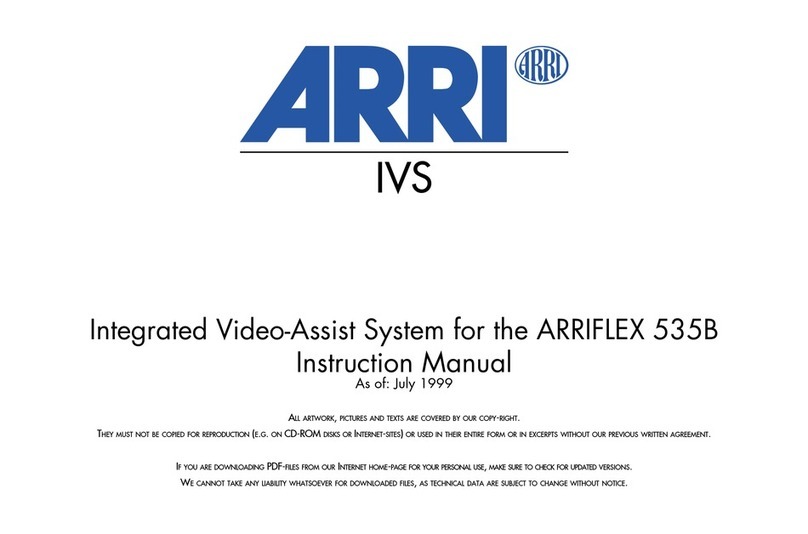
ARRI
ARRI 535B User manual

ARRI
ARRI LMB-25 User manual

ARRI
ARRI DEP-1 User manual
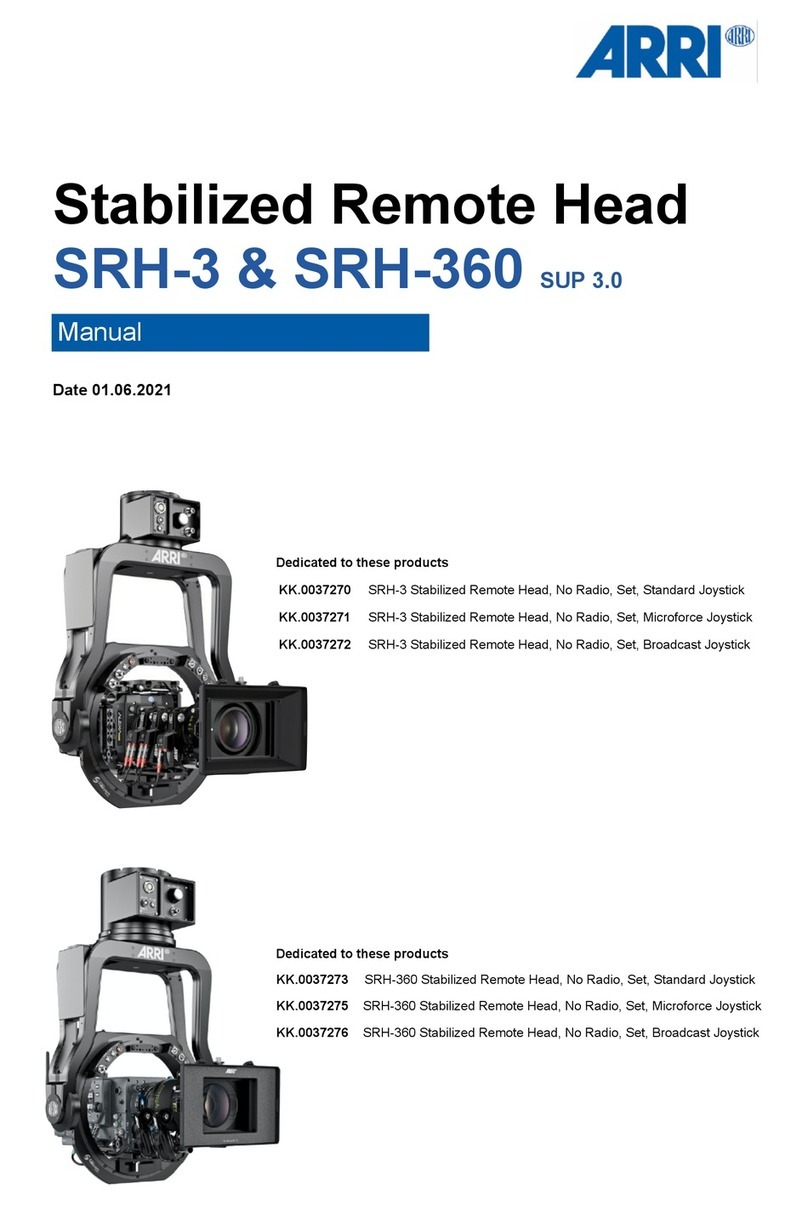
ARRI
ARRI SRH-360 SUP 3.0 User manual
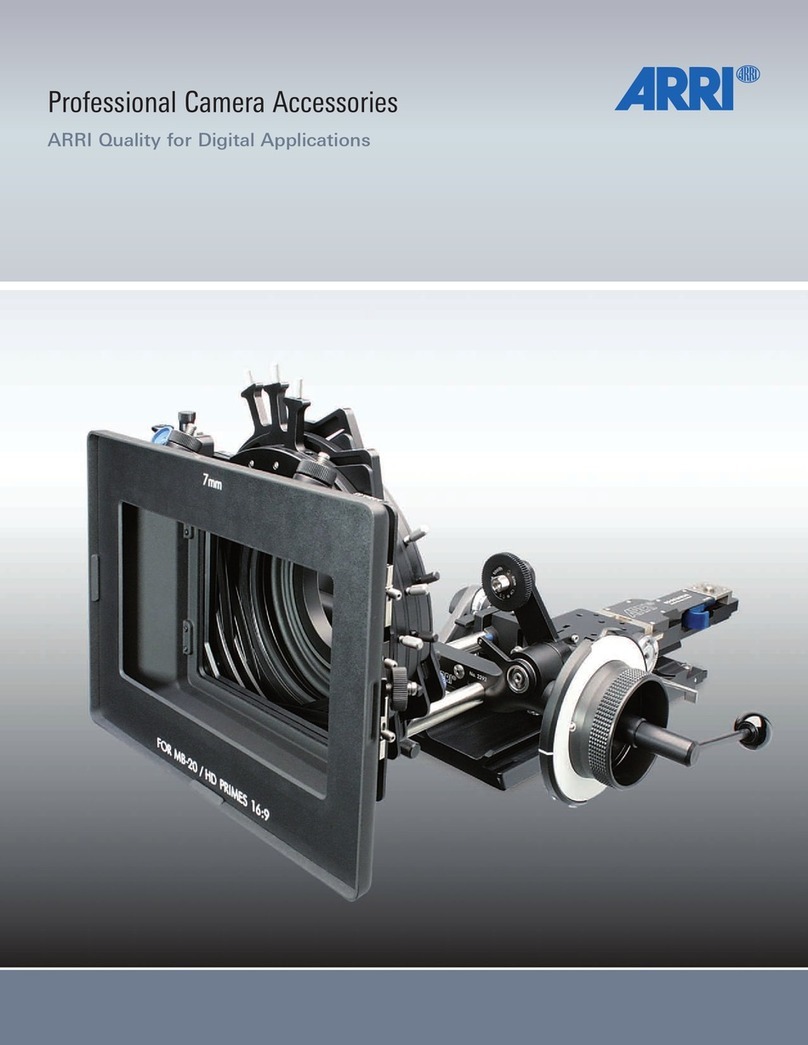
ARRI
ARRI Mattebox MB-20 User manual
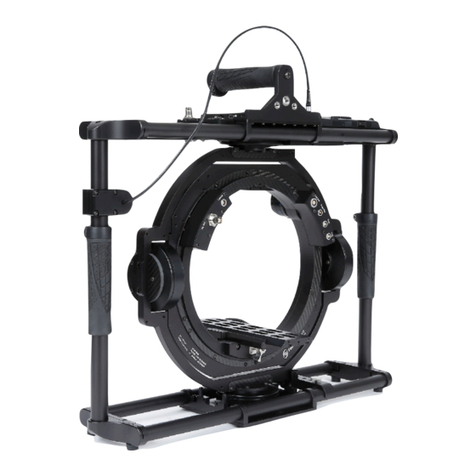
ARRI
ARRI MAXIMA QL User manual
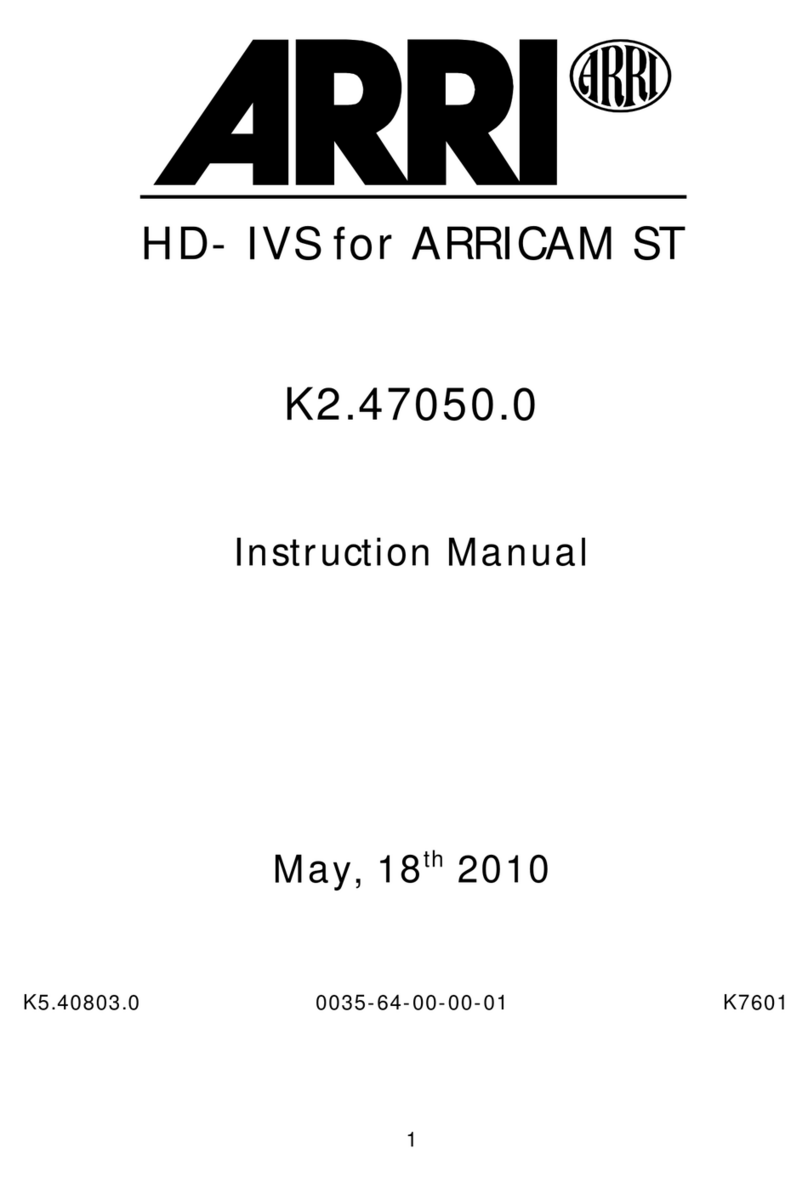
ARRI
ARRI K2.47050.0 User manual

ARRI
ARRI K2.0013195 User manual

ARRI
ARRI 12xT1.3 User manual
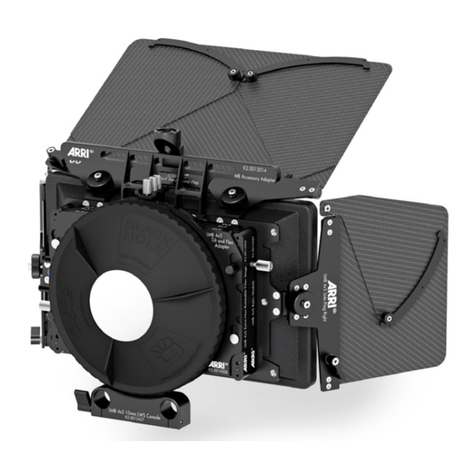
ARRI
ARRI LMB 4x5 User manual
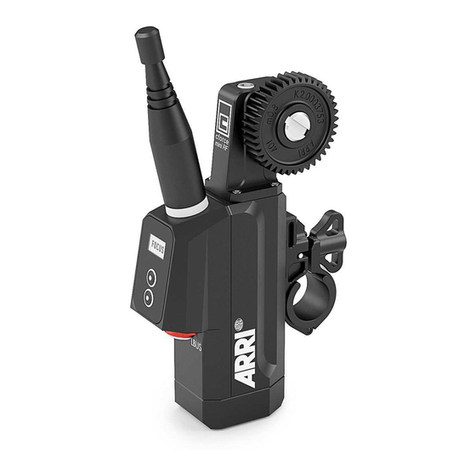
ARRI
ARRI cforce mini RF User manual

ARRI
ARRI SRH-3 User manual

ARRI
ARRI SRH-360 User manual
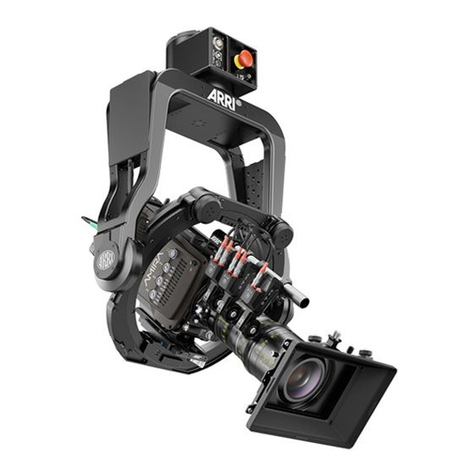
ARRI
ARRI SRH-3 Operating instructions
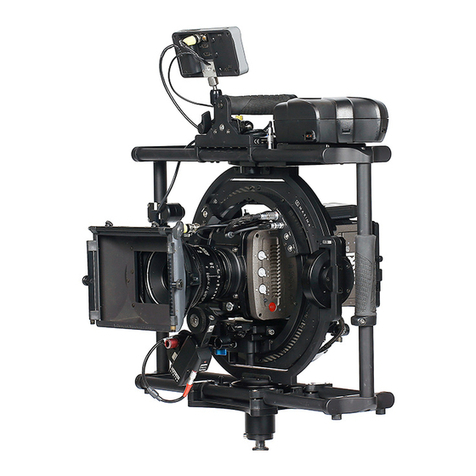
ARRI
ARRI MAXIMA User manual
